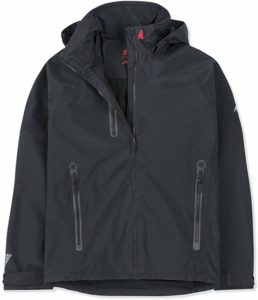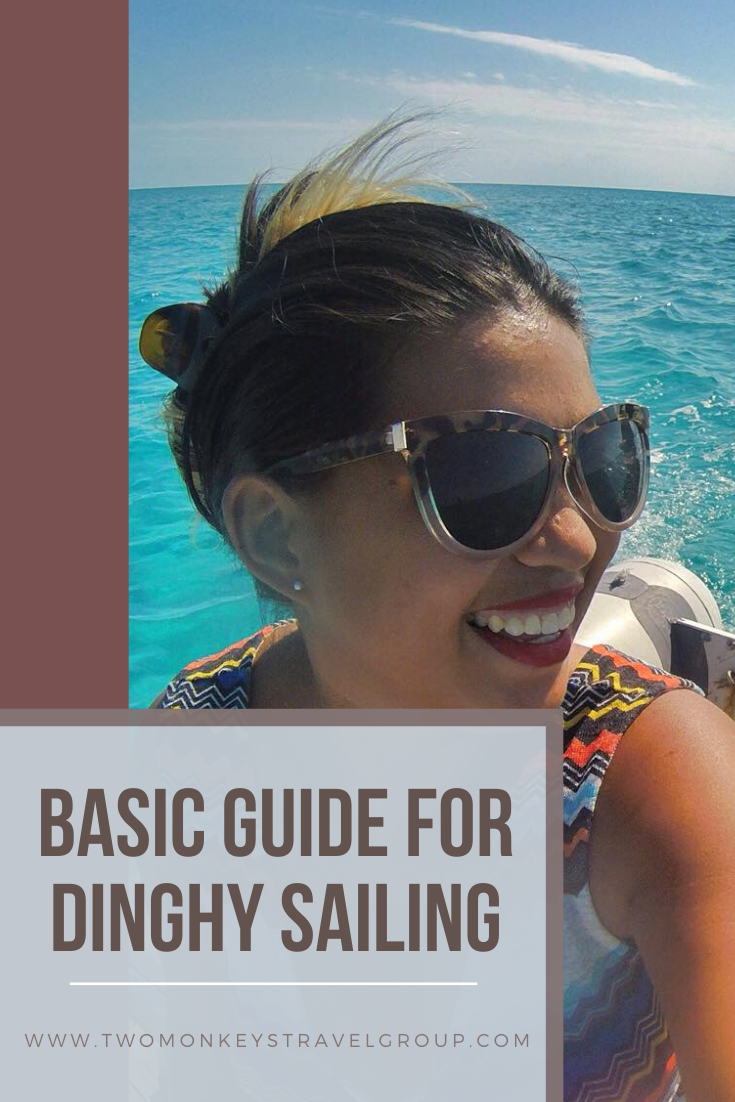Basic Guide for Dinghy Sailing – Must Have Gear and Tips For Beginner Sailor
Start your dinghy adventure by reading this guide for dinghy sailing. Learn everything you need to know before you start your new journey.
Dinghy sailing is an activity based on the five essential controls. The sails, foils, trim of the boat, the dingy’s balance on the windy weather, and the predetermined routes are the main important things to control. The term “dinghy” came from East India and referred to a rowing boat that is used to sail on India’s river.

Before trying dinghy sailing, you need several things to prepare.
Table of Contents
Choosing the Right Dinghy
To choose the right dinghy for you, you need to learn about the different types of dinghies. Based on performance and usage.
High-Performance Dinghies
As referred to the name, this dinghy boat has high performance, which is fast and powerful and designed for sailing at the most prestigious regattas. It has high maneuverability, even upwind since it’s usually equipped with a spinnaker. The International 505, the fireball, and the Thistle are the few names of a high-performance sailing dinghy.
Racing Dinghies
As the name suggests, this type of dinghy boat is designed for competitive racing. However, unlike the high-performance dinghies, not every racing dinghies offer the same level of performance. It needs the help of the crew and great tactics to optimize its functions. The most knowledgeable racing dinghy is “the Snipe International” which has accessibility for all kinds of sailors and its adaptability to the most weather conditions.
Cruising Dinghies
This type of dinghy boat is one of the most popular types to use for recreational purposes. It’s a lot more stable, which makes it suitable for leisure sails or someone who wants to learn the ropes. The dinghy is generally a lot smaller than other sailing dinghies to make it easier to handle. The hull is less rounded to make it steadier. The most popular name of cruising dinghy is the Wayfarer, which is mostly made from wood or fiberglass. The size is quite long and deep enough for three adults to comfortably sail for several hours.
Cruiser-Racer Dinghies
This type of dinghy is quite similar to the cruising dinghy but with several performance differences. It is designed for race sailing that offers a high performance yet very stable for cruising. The GP14 is one name of the most popular cruise-racer dinghy that can perform to a very high standard in racing, while also lending itself to stable cruising if required.
Classic Dinghies
This boat is different from the other dinghies. The versatility emphasized over actual sailing performance. Originally constructed from wood, but nowadays, many classic dinghies are manufactured from fiberglass and a little touch of wood to achieve the classic look. The Minto is one of the few names of the classic dinghy, which is the most recognizable classic dinghies.
Choosing the Proper Clothes
Dinghy sailing shouldn’t use random outfits. You need to consider the weather since it’s quite significant and crucial for dinghy sailing. Knowing the exact weather can help you to pack the proper clothes. Generally, the sea is more windy and cooler than the shore, so you need a pair of gloves to keep your hands warm, a pair of reliable shoes such as water shoes or boots, and the proper fabric of garments.
When the weather is windy and cool, you can use a diving suit or other warm fabric. Do not use a swimsuit/diving suit on sunny days since it will be very uncomfortable due to its thickness, which will make you sweat a lot.
Details and Pro’s and Con’s of Each Product
1. Gloves

A pair of gloves is needed to protect your hands and fingers while sailing. Making direct contact with water regularly can also make the skin of your fingers and hands tangled. For this reason, gloves are an essential thing while doing water sports. Moreover, the weather in wild nature sometimes is very extreme. The gloves can protect you from all types of weather.
There are two types of gloves with different protection, those are fingerless gloves, which half of your fingers are free exposed and full finger gloves that will give you maximum protection since it’s covering all of your palms. One of the best sailing gloves that you can choose is provided by the WindRider, which is providing a glove with a premium design that will improve users’ confidence. It’s made from lycra spandex and has an excellent grip and protection that is comfortable for your hands. This glove is perfect for sailing, paddling, canoeing, wakeboarding, and other water sport activities. The gloves have both types that you can choose based on your preference and necessity.
Pros:
- Lightweight, stretchy, breathable and easy to dry.
- All-day UV protection.
- Extra padding under the fabric.
- Superb durability under all kinds of weather.
- ¾ design is suitable for fishing.
Cons:
- Best used to relax during water sport, not in the competition.
- Pay attention to the size carefully.
2. Water Shoes

Water shoes are suitable for activities such as water sports, hiking, and trekking. It fully covers your toes, unlike the sandals. It’s also not too stiff, unlike the water boots. When you’re participating in water sports, comfort has to be the priority. Once the shoes get wet, your feet have to deal with the wet shoes all day and it’s uncomfortable. Water shoes with a quick-drying feature will be the best option.
One of the best water shoes that you can wear is from SIMARI. They provide sports shoes with a unique design that is suitable to use for any beach sports, fishing, swimming, surfing, sailing, kayaking, yoga, and other occasions. The upper shoes are made from 92% polyester that breathable, lightweight, durable, and quick-to-dry. While the soles are made from rubber that is tough enough to use in rocky areas. It has a unisex design with a wide range of sizes that you can choose.
Pros:
- Easy on and off.
- Ergonomically molded soles with 8 holes as drainage.
- Anti-slip, anti-scratch, and stab-resistance.
- Easy to carry and portable.
Cons:
- Not recommended to dry it near fire-place.
3. Boots

As for boots, there are two types of boots based on the height that you can choose, that is ankle high and knee-high boots. There are several things you need to consider before purchasing boots, such as the grip, snug-fit, and quick to dry features.
Neo Sport provides boots made from neoprene with puncture-resistant sole and thermal protection. It’s suitable for any water activities and equipped with tough zippers. The available thickness is 3mm for warm water, 5mm for moderate water, and 7mm for cold water. The boots are suitable for both adult men and women.
Pros:
- Durable construction with thermal protection.
- Easy on and off the zipper.
- Suitable to use in cold water to warm water with different boots’ thickness.
- Large size range from 4 to 16.
Cons:
- No fins holder.
- Double-check the size before purchasing.
4. Diving Suit

A diving suit is needed for you who wants to go sailing using a small boat. It is mostly made from neoprene that will prevent your skin from getting exposed to the water. With minimum contact with the water, you can keep your temperature warm.
ZCCO provides a full-body wetsuit that’s suitable to use for diving, snorkeling, and sailing. The wetsuit is made of neoprene and has unisex design and size. It has strong sewing-overlapped sewing to make sure that the diving suits are sturdy. More protection for your body is offered by featuring an anti-abrasion knee pad made from a very strong nylon pad.
Pros:
- Ultra-stretch 3mm thick neoprene which is also sturdy and durable.
- Easy to take off or put on with 4 small zippers at the arms and legs.
- Leak-proof with water stop seal feature.
- Equipped with an anti-abrasion knee pad for better protection on your knee.
- The tighter you wear, the warmer you’ll be in the water.
Cons:
- Make sure to properly measure your body to get the fittest diving suit.
- The zippers generate a very minor leak.
5. Sailing Jacket

To add more protection and to keep your body warm, a sailing jacket will never be wrong. It does not only keep you from chilly and windy days but also keeps you from direct exposure from the harm UV-rays.
As an option, Musto provides a sailing jacket series BR1 Men’s Sardinia Inshore. It’s fully taped for 100% waterproof protection, polyamide shell, and polyester mesh lining to increase the air circulation to add comfort. The jacket’s equipped with external zippered pockets and a YKK Vislon main zipper with protective roll-over zip guard.
Pros:
- Fully breathable fabric, making it suitable to use for sailing in warm climates when you encounter rain and spray.
- Featuring removable fold-away hood with two-way adjustment and stiffened peak.
- Adjustable cuff tab fastener made of molded rubber.
- Equipped with articulated sleeves and underarms which offers improved mobility to increase performance.
- Available in sizes XS to XX-large with various color options.
Cons:
- Not delivering to some countries.
Additional Features
There are so many additional features that you can consider to use to ease your dinghy expeditions. That includes the buoyancy, oars or paddles, and launching wheels.
Buoyancy
Buoyancy is crucial to pack no matter what kind of boat you use for sailing. Even though you have a very high skill in swimming, buoyancy is important. You can use several types of buoyancy, such as a wearable buoyancy or the regular one. The PFD is one of the wearable buoyancy that you can choose. It’s very helpful for snorkeling or emergency condition, inflatable buoyancy, or other.
Details and Pro’s and Con’s of Each Product
6. Oars / Paddles

One of the most essential parts of dinghy accessories is the oars. Without the oars, you can hardly navigate your dinghy or move it faster. The oar has to be wide and flat at the endpoint. Unlike the kayak’s paddle that has a blade on both endpoints, oar only has a blade on one endpoint.
Oceansouth provides oars that come in a package of 2-piece detachable aluminum oars that are convenient and easy to store. It’s also very durable and sturdy. The handle is quite long, with 78 inches/ 2.2-meter length. The blades are made from engineer grade glass filled with polypropylene and are equipped with UV protection on the grip and oars endpoint.
Pros:
- Two-piece design for convenient storage.
- Supplied in pair with oarlocks.
- Bright dipped aluminum tube handle.
- Lightweight and floatable.
Cons:
- Not delivering to some countries.
- Didn’t come with oarlock pins.
7. Launching Wheels

Dinghy wheels are usually constructed as a boat launching system, which is a set of wheels to help you launch your boat and transport it. Mostly it is used to move your dinghy from your car or trailer in the harbor or parking lot down to the water.
The launch wheels are usually installed on the transom of your dinghy. By installing this gear, you can easily transport your boat from and to land without much effort. You can also prevent your boat from getting damaged, such as scratched during the dragging back and forth throughout various surfaces.
Seamax provides deluxe launching wheels made from the strongest marine grade T6 aluminum alloy with CNC processing and is suitable to use in any water, even salt water. The small parts are constructed from stainless steel. The wheels’ diameter is 23 to 30 inches, and the maximum recommended load is 600 lbs in all conditions. It’s suitable to use for inflatable, aluminum, and fiberglass boats. The launcher has 4 stages of length and 4 wheel arm position. The dolly can be adjusted, while afloat in the boat leaving or coming into.
Pros:
- Anti-rust material even for saltwater usage.
- Adjustable dolly while afloat in the boat leaving or coming into.
- Lightweight and sturdy.
- Easy to maintain.
- Large maximum load up to 600 lbs, including the boat and all gears.
Cons:
- It’s hard to install for beginners.
Outboard Motor Parts
To make it easy for you to row, you can install outboard motor parts on your boat. The motor that is equipped with handle is more preferable since it will help you to handle the boat properly. Different motors feature different tiller handles, each design will make your sailing easy and comfortable.
Dinghy Anchor
An anchor is a crucial accessory. To choose the most suitable anchor, you have to understand the conditions of the area where you want to anchor your boat. The depth is determining the length of the anchor chain you’ll need.
Boat Seats
You need comfortable seats since you’ll be spending a lot of time in your dingy boat. The proper seat will give you access to control and row your boat in a better way. You can choose inflatable, wood, or aluminum seat, but make sure that the cushion and backrest are comfortable enough for your body.
Dinghy Repair Kit
Dinghy repair kit consists of inflation pumps (whether manual or electric), inflatable bottom paint, boat cleaner / UV protection, keel guards, PVC, adhesives, tear-aid fabric, fastener kit, etc.
That was the basic point of dinghy sailing that you have to consider before you decide to try dinghy sailing. Regardless of those important points, your comfort and safety have to be the number one priority whether you’re sailing in a smaller boat or larger boat.

Are you on Pinterest? Pin these!










